As an amateur scholar and die-hard enthusiast of everything to do with Alice in Wonderland, I have launched a podcast that takes on Alice’s everlasting influence on pop culture. As an author who draws on Lewis Carroll’s iconic masterpiece for my Looking Glass Wars universe, I’m well acquainted with the process of dipping into Wonderland for inspiration.
The journey has brought me into contact with a fantastic community of artists and creators from all walks of life—and this podcast will be the platform where we come together to answer the fascinating question: “What is it about Alice?”
For this episode, it was my great pleasure to have my dear, dear friend Eshel Ezer join me as my guest! Read on to explore our conversation and check out the whole series on your favorite podcasting platform to listen to the full interview.
Frank Beddor
Eshel Ezer, welcome to the show. I’m really excited to be talking to you today. You are a photographer. You’ve worked on There's Something About Mary, you did Wicked and worked with Julia Stiles, you did the art in Birdbath, you took photos at my first wedding, and you did a colorful piece of art for my parents’ 50th anniversary.
I have really strong memories of the There’s Something About Mary job. When I first went to the marketing department, they were really excited about the movie and there was a lot of pressure to deliver really great marketing materials. We had to have a photoshoot with Cameron Diaz, so I put my hand up and said, “Hey, I have a photographer who would be great. I believe he's worked with Cameron.” The head of marketing said, “If you can get Cameron to sign off on it, then we can hire him.” And you had done a job with her before and she was excited to work with you again.

Eshel Ezer
I don't know how old she was when we first worked together but she was extremely young. She was a model then and I shot her a few times. We shot for a hair magazine, a big editorial with some famous hairdressers. It was for Modern Salon or American Salon, one of the two big trade magazines in the hair industry. They always used to do just hair, regular photoshoots. This fashion editor had a vision and we hooked up and I told her, “If you want us to do photo shoots together, let's be creative. Let's try and give another dimension to what regular hairdressers used to do.” So we came up with more of a fashion concept story and connected the hair into a bigger story with more body and action. The hair is part of a scene. I think that was the first job I did with Cameron.
We came up with a crazy scene. We shot it at a historic hotel in downtown Los Angeles. She was the star model in the editorial. It came out phenomenal. So beautiful. The hair was great. It was not cheesy or corny.
FB
She is remarkably photogenic. When you see her in real life, certain angles are magnificent. Then there are other angles that sometimes you go okay, she looks like a regular person. But when you take a photograph of her or she's filmed in a movie - just stunning.
EE
She's a professional. It’s not just how she looks. It's her energy. She brings something with that smile, in her eyes. She’s a free soul. A Southern California girl who got hooked up in this fashion scene when I met her. We liked each other. She loved the photos. I liked the way she was not complaining about anything. Crazy hours, lava lights, and very specific directions.
She came to my apartment on Kings Road and I did a photo for her. It was beautiful. I shot her behind one of our windows, which was an old Los Angeles window with the squares. She just looks so innocent. So I think we had this thing. My mom was visiting when I was doing that shoot. It was more than just a young model. There was a connection.

FB
No wonder she was so interested in working with you. I didn't realize at the time. I knew you two had worked together before but I didn't know it was so successful. The same chemistry seemed to be there when we shot the poster photos for There’s Something About Mary.
Just to go back, she is a relentless worker and she never complained on Mary. She didn't complain when she came to that photoshoot. There was no prima donna posing at all. She just got right to it. But I remember the concern was her skin had broken out and we really needed to do a good makeup job. I thought we might not even be able to do the shoot but the makeup artist did a fantastic job and then you guys went to work. What do you remember about the photo shoot? Do you remember the shot that ended up on the poster?
EE
We had a creative meeting right before the shoot at Fox. We were meeting with the head creative director, Tony Sella. We sat at his office and the advertising agency brought over 70 different layouts and you could tell that he's not flipping over anything. I sat quietly. Let them do the talking and I'll shoot it. But then Tony looked at me and said, “Eschel, what are you saying?” I didn't know how to say none of what they showed was good.
FB
You were trying to be diplomatic.
EE
I was. I said, “I think I know what we need to do.” But the other people kept on talking. Tony Sella said, “Guys, the photographer’s talking,” and everybody became silent. I said, “She's so innocent, she's so beautiful, and she has this incredible free spirit. We need to capture that so everybody can relate to her.” Tony Sella said, “Meeting over. He knows what he's doing.”
So on the shoot, Cameron was in makeup for three and a half hours. The makeup artist did a great job but it was killing our time. Then they wanted to have hours on styling. Then her manager said “Guys, that's it. She has to go, you have half an hour.” I said, “Let's stop it. I cannot shoot it.” We spent five hours on prepping and it's super important - hair, makeup, styling. But now I need the equivalent amount of time to shoot it. Tony Sella arrived and he negotiated with the manager. Cameron was unbelievable. She was, “Let's have fun. Let's get the best out of this day. I don't want to leave so don't tell me to leave.” Her attitude was in our favor for getting the best shoot done.
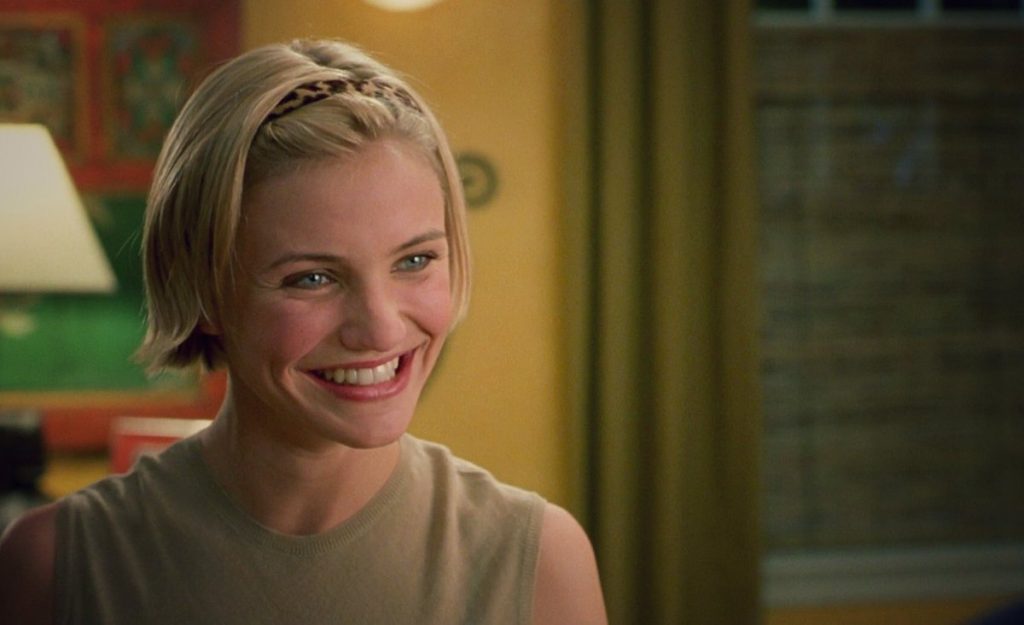
Now, I knew that I was gonna have a problem in a technical sense. It was before digital so everything was on Polaroids. I knew that the first Polaroid had to be beautiful because if the first Polaroid was horrible, she would lose it. After so many hours, she knows her limitations, and it kills your confidence. She was an actress by then she wasn’t a model anymore. We built a crazy lighting setup. I'll never forget it. We had so many lights. It had to be smooth but with contrast at the same time so it wouldn’t be boring and flat and the photo would have some depth.
I did the first Polaroid and it was amazing. Not for me but it was amazing enough for her to say “Wow, it's beautiful.” But for me, it was not and I knew I had to work on it because when you put so much makeup on and then add the lights, you’re gonna see the difference between her skin color on her neck and her face. So you need little touch-ups so it’s not gonna look like she has a mask on her face. Then you need to work with the lights and everything is going to be nice and smooth. Then Tony Sella said, “Eschel,” and he stood like an inch away from my face. Tony said, “Make all America love her.” In my entire 25-year career as a fashion photographer, I never had more difficult creative direction than that.
When we started, she started to loosen up and she felt amazing. With the direction, it was to try to get her not posing. We used the wind machine just to have the hair blowing. Nowadays, with digital touch-ups, you can do it right away. You go to the computer and say, “We have the shot.” But when it's on film, it needs to be processed. So we kept on shooting. I knew we had shots that could be the one. Sometimes the first one is the best but you just cover more. You take more film and shoot more. The bending, chin-up look, and smile is such a simple photo. I think that’s why all of America loved her. It's a simple photo, nothing looks made up.
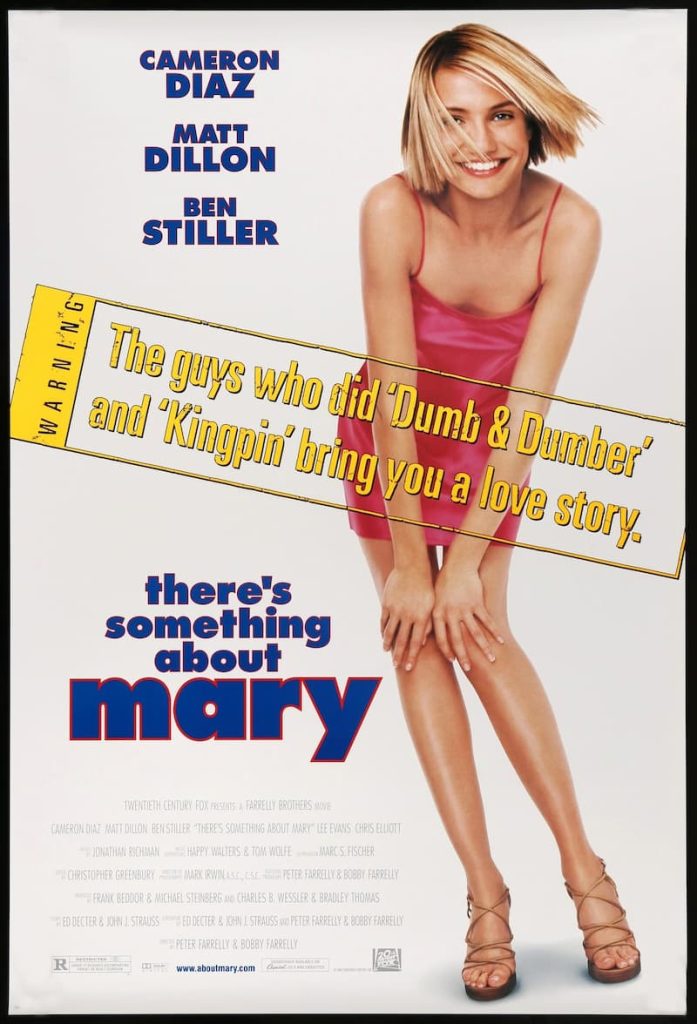
FB
It captures what Tony was asking. You fall for her because she is the All-American woman - the haircut, the pose, and the kind of whimsy that she communicated. You feel the joy of the process.
What is your technique to bring out that with models and subjects? Is it different each time? Is the physicality a big part of it? Is it about the story and trying to tap into the character? Because you're not going to say to her, “Hey, America needs to love you.” You're just going to say, “Be who you are because we love you. I love you. Everybody loves you.”
EE
There is a technique. Every successful photographer has his own technique on how to connect. Throughout the years, I've learned what I have to do to create this connection. So later on, when it's show time, you get more out of the shoot than just a photo, you get feelings, emotions, and connection. What I did with her was exactly what I was doing, just on a more appreciative and sensitive level because of who she was. Our past connection, for sure, helped. And yes, the moment she knows you're not just using words when you say “You're beautiful and I easily fall in love with you.” If she knows you’re not just bullshitting her because you want to get the job done and leave which, technically, this is what happens. But it's telling a story to her. The story is so important, especially because she's an actress. The story is so important. It has nothing to do with the movie. It's the story of the photoshoot. Who's the character? What are we doing here? What are we doing together? What kind of feelings and emotions would we like to capture for her? At a certain moment, all barriers were off and something amazing happened.
FB
I love that guy, Tony Sella. I remember from the first meetings when they put all the different posters up, he had a real sense of the artist. The art had a little Steve Jobs in terms of the aesthetic. I certainly did not hear that he shut down the room. Those are the talking heads. They're the same people from different departments giving notes over and over. They end up diminishing the idea by little paper cuts. But Tony recognized one, the photographer who's actually going to grab the shot is speaking, and two, once you said what you said, he cut the meeting off, knowing that you have to execute.
I remember the manager throwing his weight around and Cameron standing up because that's who she is. It was a very stressful shoot because there was a lot at stake. We knew it was going to be a successful movie and we were rushing to come out in the summer when we were originally supposed to come out in the fall. Then right at the end, I snuck in and said, “Hey, Cameron, let's do some photos.” You did the same technique on me and I have some of the goofiest photographs of all time. But there was Cameron Diaz and so they all look pretty amazing because she's amazing. So I had the glow. I printed out some where I had at least a decent expression. But in looking back at some of the stuff we did, I was going “Oh, no wonder I never printed that.” Trying to dance. It was deeply embarrassing.
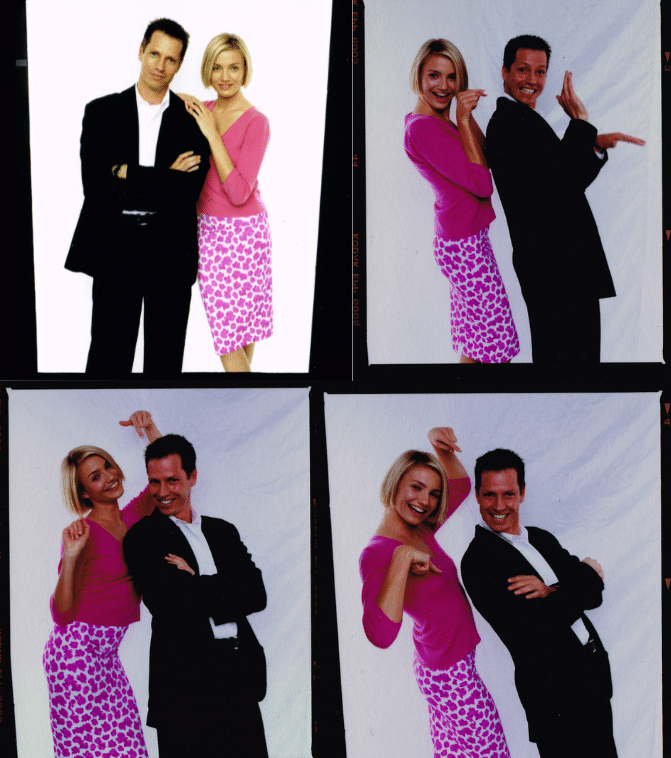
EE
It’s embarrassing to stand in front of a camera when that's not your job.
FB
But those are some of the best photos I have of being on that movie because it was just a camera, myself, you, and Tony, there was nobody else. You nailed it. Every time I see the poster, I'm exceedingly proud of our collaboration.
EE
That poster, the real size, hangs in my studio in Tel Aviv. Everybody saw that I was so in love with the movie and they’d ask, “Why do you have these?” “What do you mean why? I shot it.”
FB
You shot Cameron when she was 16 and you also ended up shooting Julia Stiles for my movie Wicked, when she was 16. Both movies came out around the same time. Wicked went to the Sundance Film Festival in January 1998 and There’s Something About Mary came out in July 1998. What I discovered on Wicked was that I thought Julia Stiles was a movie star in the making. She was remarkable in the film and she was very photogenic. I told her I was going to pretend she was already a movie star and put her solely on the poster in the same way we did with Cameron Diaz. But I needed some really great photos so you and I went to work on that. Let's talk a little bit about that shoot.
Wicked is a murder mystery that takes place in a gated community. Julia Stiles basically takes over her mother's role when her mother is killed. So it's a little bit of a Lolita-esque story. We needed to find the right balance of seductress and thriller. She had some really great costuming so we brought some of that in and we went with some All-American jeans, a t-shirt, and then some nightgowns because of the dynamic with her father. It's no secret she wants to take over her mother's role in all capacities. So walk us through what it was like working with Julia in comparison to the There’s Something Mary shoot and some of the choices you thought were important to capture the essence of the film and who she is as an actress.
EE
It's a totally different agenda when a person is just a model or it's an actress. You basically have to shoot for a very specific assignment with a very specific name. So it's not just to capture the beauty, “Let's make you beautiful and do it in the desert or the beach or in a convertible.” That’s how you come up with stories for editorials. When you shoot editorial, just a story and a beautiful model, then you just go and perform. She's a good model and you're a good photographer, so you create whatever you want.
When it's a movie, and it's an actress what I have to do is hit right on the complexity of the characters. With Wicked, it was like a week-long job we did in one day. I remember we shot in the studio and we went on the rooftop and we did a lot of stuff on the rooftop in many different styles. The movie is called Wicked and Julia’s the lead part so we tried to bring out the wicked part of her personality.

FB
We were looking to bring out three things, the danger, the vulnerability, which you also capture, and the seductress part of it. Remember, we're talking about a 17-year-old, so it felt a little daring walking the line with her parents there. But Julia, like Cameron, was completely up for it and wanted to take a lot of chances.
EE
She is, and I will never forget, extremely smart. Her IQ is way above average. Usually, we say “high IQ” for somebody who needs to go to a different profession. But, with Julia, I think it enables her to play different characters very easily. There was 100% cooperation with whatever we said and wanted to do. She was jumping in and out of different characters when we wanted to bring the softness and the purity. But then there were the twisted colors and the shadows. The wicked side.
FB
Didn't you use certain filters to get some of these crazy backgrounds from the sky?
EE
Many times I use colors on lights to control and get the right density. But these are manipulations of the film that I knew would bleach out skin. The photo will come out like pure porcelain with this coldness and if we're going to use the red lipstick it will pop because I knew what this manipulation of the color is going to do. It's like skin dyeing.
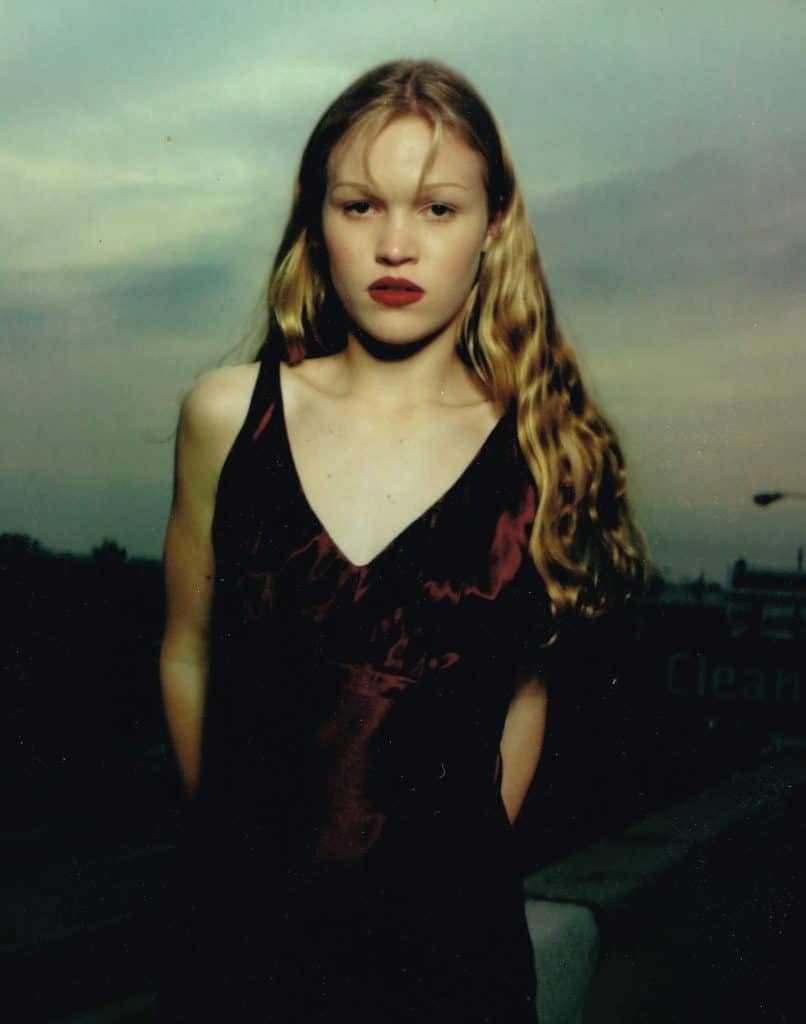
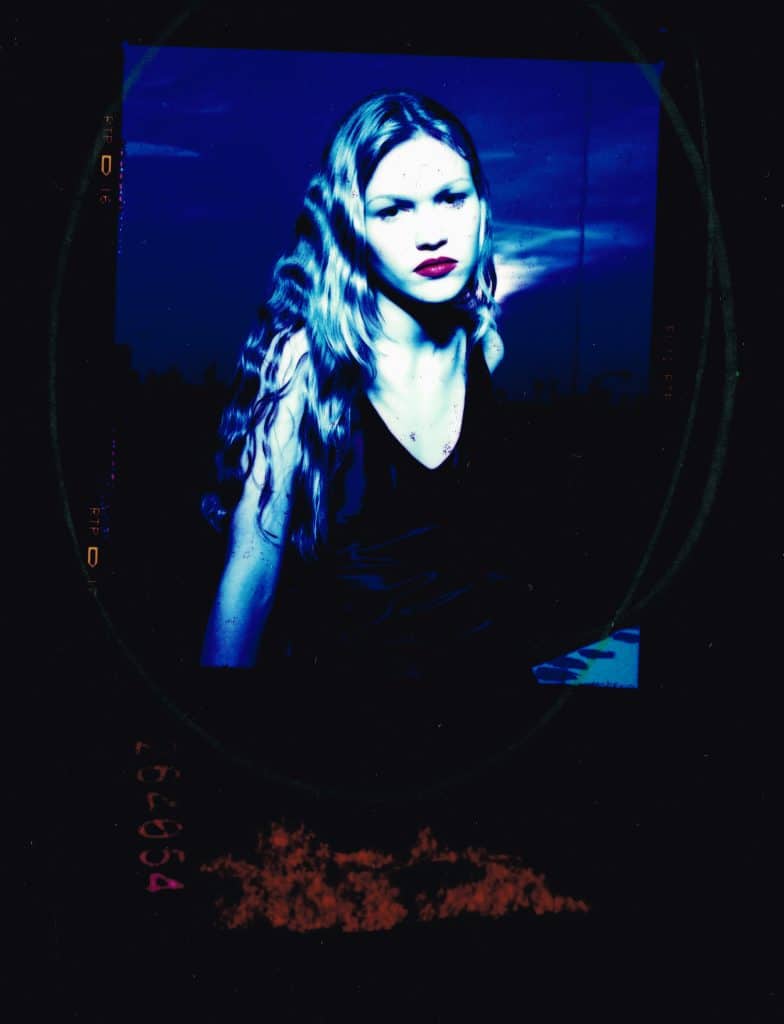
FB
Explain to me why the film is so different in the photographs for Wicked and the technique you used.
EE
First of all, there is a format difference. When you blow up certain formats you will hold the grain. In film you speak about grain, in digital you don't have grain. If you want grain you need to create. Back then, with film, different types of films had different sizes, different densities, different contrasts, and different ways the film would react to different lighting and exposure. What I wanted was to have the technique help us go all the way to the extreme. It’s mind-blowing to see her expressions combined with the lighting, the unique processing, and her look with the makeup. It changes so much. It's really mind-blowing to see because you see the complexity of the character. She has so many different sides. It's wicked.

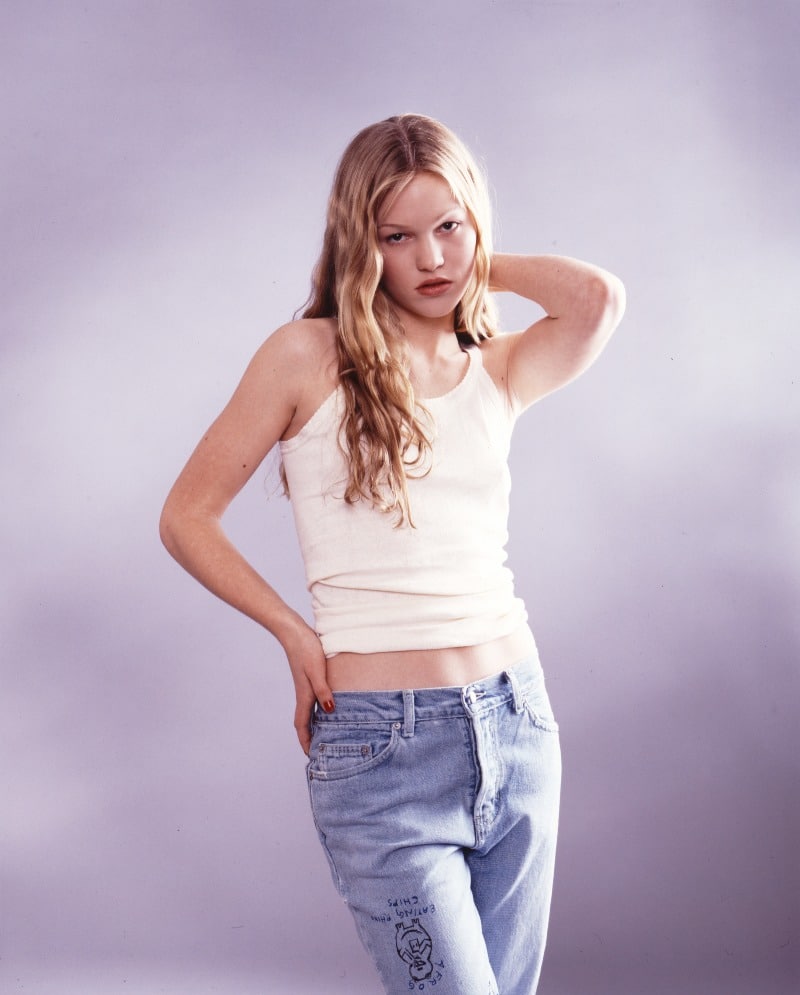
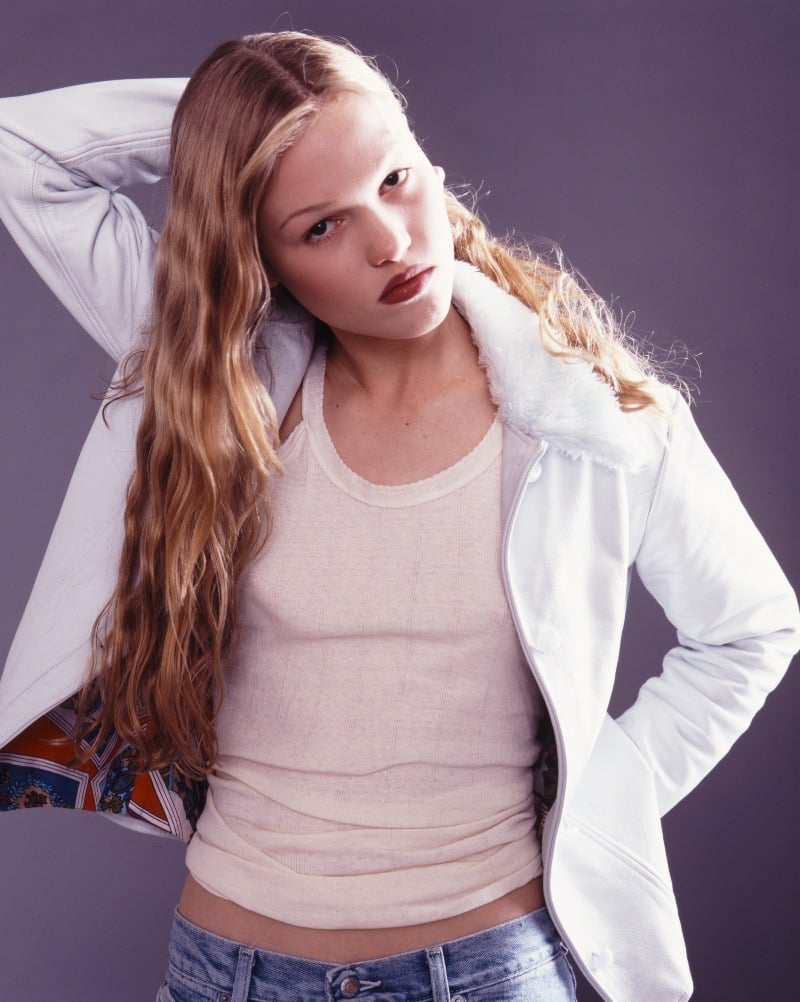
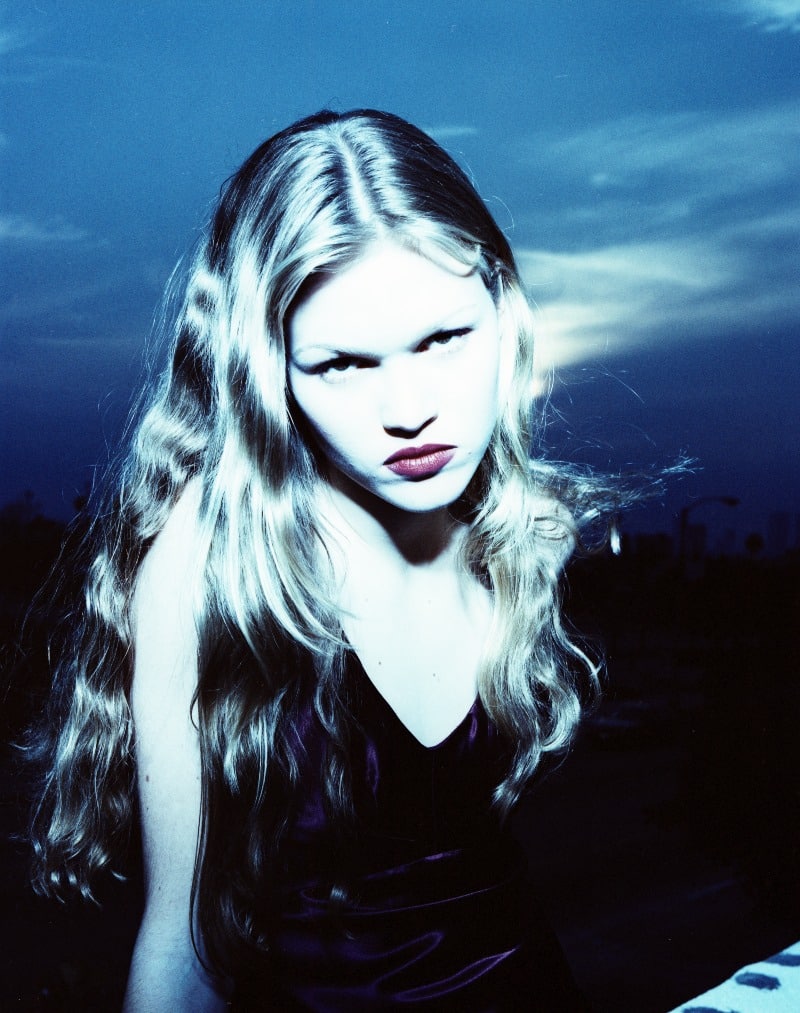


FB
Your passion for the work and the idea of creating something fresh was ever present when we worked together and now it's many years later and you have a different career but I can still feel the passion you have for doing quality work. It really comes down to this being your art.
We met years and years ago.
EE
We bonded over scuba diving.
FB
We bonded over scuba diving in Cozumel. Then I asked you to shoot a poster for a play I did called Birdbath. I was super nervous and really bad. I had to have a few drinks to relax and then we really got into it.
EE
We got into it.
FB
It took a while. But once we got into it, those images were very arresting.
EE
I remember our conversations to understand the play, what it’s about, and what we would like to capture. “So the poster will show just the actors? No, that’s boring.” We wanted to try and bring something from the feeling of the play. We used overtime exposure and transparent images. Nobody does these things anymore. Now you take Photoshop and “bang, bang.” But it was incredible to create. One of the things that we did technically was, we had to have lights on the outside but we were on the second or third floor in this building downtown and we didn't have the budget for cranes with lights. We had nothing. I really think we were never prima donnas. Creative people do creative things. We had to bring lights from the windows at night and we pulled these stands and we extended the stands and we tied them to things inside the apartment. We just drove the lights from the inside of the loft and tied them with ropes so it wouldn’t fall on somebody in the street.

FB
What we were doing was, on some level, illegal. Sneaking into the building. Putting up lights. Not asking for permission. Just apologize later.
EE
Let’s go do it. Get it done. Beautiful.
FB
You had an art show that I helped organize and Tony Scott was the first one to buy your art. Tell me that story.
EE
It was a project I started during my second year in art school back in Israel. We got an assignment to shoot something in motion. So I took my brother to the beach in the Mediterranean just after sunset. I used a strobe flash and I was holding the camera and he did something in the water with the sun behind him. The manipulation of the colors of the film created magic. It was stunning. Then I had the final exam and exhibition at the end of the second year in school. Then I left Israel and went to New York to complete my studies but I kept on shooting this project.
One of the things my teacher in Israel said was, “This is beautiful. Try to see if you can get closer.” And I kept thinking, “What does it mean to get closer?” He's in the water, I'm with a camera. It's not an underwater shoot. How am I gonna get closer? Then it just kind of became a memory. But it was a project I wanted to keep on progressing. It meant something to me. It was a man's body coming out of the water. I thought, “This is what I want emerging out of the water, man's creation is from water.” The ocean is my forever love. With my old injury in the army where I shattered my back, I was physically in pain for too many decades. So there was a lot of emotional involvement for me in creating this image of a man's body coming out of the water with a lot of power, but also experiencing and projecting pain. That was the general idea. Then I had to start seeing what kind of colors I wanted to use and how dramatic I wanted to be. We shot this project every time I visited Israel for 10 years. We kept on taking pictures in the Mediterranean, but also in the Dead Sea, with crazy hours because at the Dead Sea, we had to shoot at sunrise, and at the Mediterranean, we had to shoot at sunset.
I needed the sun as a background, as my theater. As an artist, nature is a background and if you know how to work with it, you can do whatever you want with the background. You don't have to be in the studio, you can do it outdoors if you control the lights. So in the Dead Sea, the sun will be behind my model in the morning, and in the Mediterranean, it will be behind him at sunset. I needed the glow of the sun at those times.
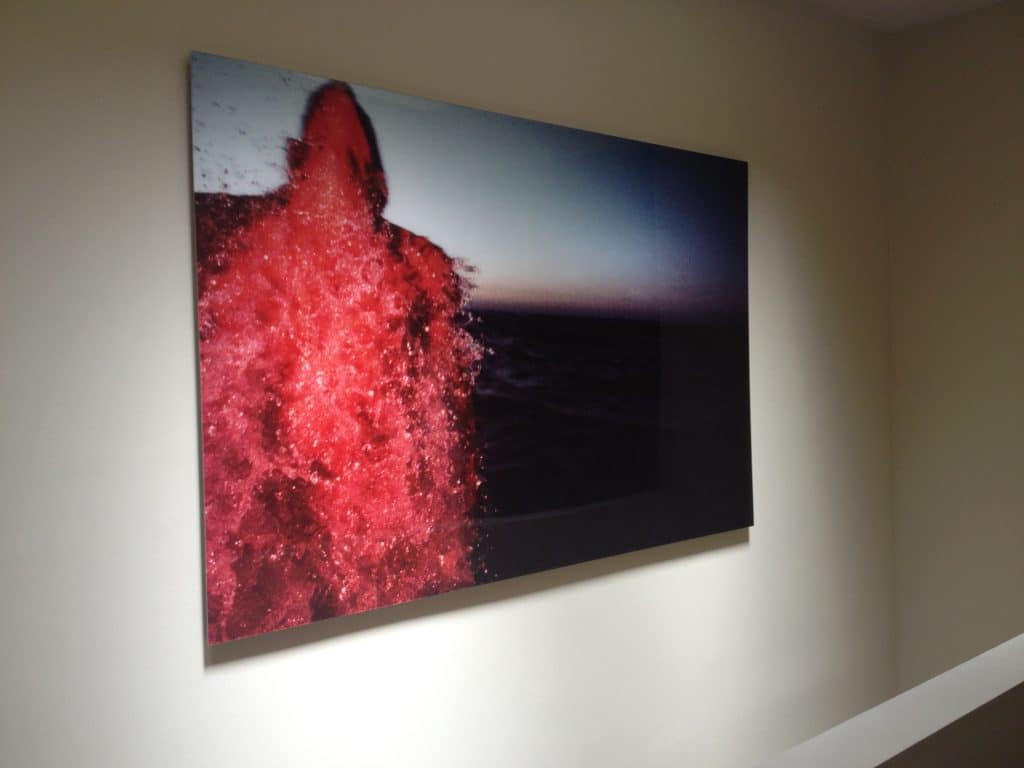
FB
Just the beginning and just the end.
EE
It could be very apocalyptic. A very extreme environment. You don't see it with the naked eye. It’s the film that later sees it. So we kept on doing the project. I visited home in the winter and we used to shoot it in January or February in the Mediterranean when it's 11 degrees centigrade (52 degrees Fahrenheit) in the water and it's blowing and raining. We used to stand on the beach looking at each other, “We're crazy, right? We're not going to do it today. We are going to do it today. No, we are not going to do it. Yes, we're going to do it.”
FB
You’re saying “We're going to do it,” because he's the one going in the water.
EE
We were both in the water. He needed to be underwater. That was the thing my teacher told me, “Try to get close.” So I had a wide angle three feet away when he was coming out of the water, splashing water. I had my camera in one hand with the aperture, speed, and everything set according to what I wanted to achieve with manipulation of the light. In the other hand, I was holding a stove, a flash, with gelatine over it for the color that I wanted to create. He would go underwater and come out, splashing all over the place, and I had to grab the shot and move the camera away. Otherwise, it's all gonna get wet. So it was just him and me, for years no assistance.
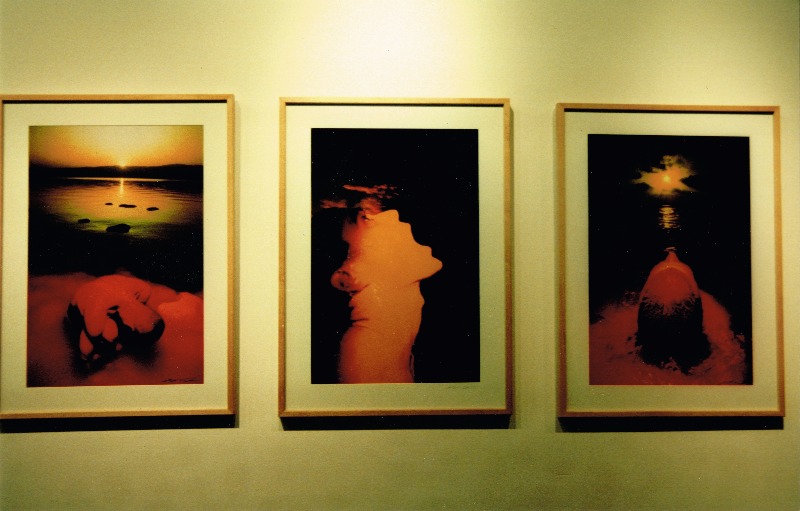
FB
And how did Tony Scott become involved?
EE
That was crazy. You're artistic and you're creative, and you're an entrepreneur with the way you think and the way you see the future, and your ability to connect to different areas. We were speaking about these photos and we became such close friends, we shared things clients or friends in the business don't usually share. We said we needed to do something with these photos. They have to be seen. But I didn't want to do a regular show. I don't care about going in to schmooze the galleries. I'm a photographer. I have an agent. I have to be nice to everybody and do these political things with the ad agencies and creative directors. I didn't want to do it in the galleries. So we said, “Let's do it ourselves. Let's do two nights. We're going to use your house. We're going to show one photo. We're going to have a party. We're going to do the first night for friends and we can do the second night for industry people.” We showed one photo and we had a light table with some slides.
FB
That one photo was spectacular. Remember, when you had to go blow it up, how obsessed you were about getting the grain right? Those poor people in the lab.
EE
It was the biggest size back then. It was museum quality. So it will be preserved for 200 years guaranteed. Who the hell is gonna live to see if the colors stay right or not? So we blew it up and the grain just became like, “Whoah!”
FB
It was part of the picture.
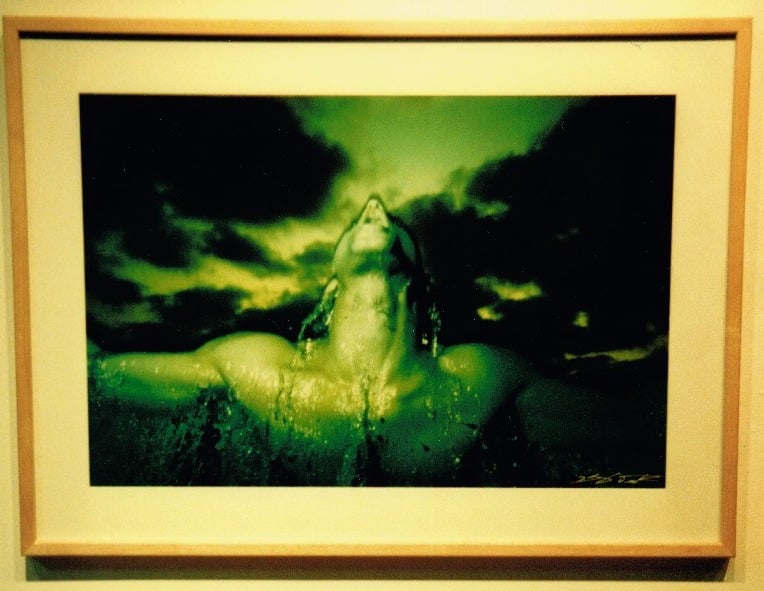
EE
So we hung this huge thing on the wall and we covered it with a very light blue sheet. We hung it in a way that we could pull a string and the whole thing would fall. We had to have this surprise factor. Everybody walked in and there was this huge thing covered. People knew I was a photographer so they thought it was probably some picture. We waited and waited and people were anxious. We pushed it later and later we said, “People are probably gonna leave before seeing it. We have to unveil it.”
There were two important people I invited. One was a good friend of mine, an ex-model, and actress, Emmanuelle Sallet (Pytka). She was in Under the Cherry Moon, the Prince film, and she did beautiful photo shoots. She had a very famous perfume campaign in Vogue and Elle. She moved to LA and I met her at the agency and said, “Oh my god, I have to shoot this girl. Who is she?” We became best friends. I have amazing photos of her. She got married to one of the top commercial directors, Joe Pytka. Back then he was doing the Pepsi commercials with Michael Jackson. He was the biggest commercial director.
FB
He’s also a wild man and really hard to work for.
EE
Their story is crazy because she worked on the set with him on the Pepsi commercial and he threw her off the set and then apologized and took her for dinner. And married ever after.
FB
My first wife worked with Joe and he loved her because she was so expressive. But, he was a bear to work with, though if you gave a lot, he loved you and would work with you over and over. I heard stories about anybody who wasn't in front of the camera, certainly, if you were in front of the camera, you were at risk, but anything around the camera you were definitely a target.
EE
I had never met Joe before but I invited Emmanuelle and I asked her to bring him because I knew who he was. Then, I was standing next to the photo speaking with the people who gave me my first shot in L.A. Tony Lane and Nancy Donald, the co-creative directors at CBS Records. I shot album covers with them. They knew me as a fashion photographer who was shooting rock bands so they were asking me about the photo, “Okay, Eschel, we know you shoot rock bands, what is this?”
Then, out of the corner of my eye, I saw Tony Scott coming in. Tony was a friend because I worked with his ex-girlfriend, Tanya and he loved the photos. I shot crazy photos for some editorial and she brought them home and Tony saw them and said, “I have to meet this photographer.” So Tony and I became friends and I invited him and Tanya to come to our opening. Out of the corner of my eye, I saw Tony coming with his red baseball cap and I saw him coming closer to the photo and then stepping backwards. Then coming in again and going backward. With his heavy British accent, he said “Eschel, Eschel, what is it?” I said, “Tony, what do you mean? It's a photo”. He said “No, but what is it? Is it a photo or a painting? I cannot decide.” I said “Tony, It’s a photo.” He said, “So how did you do the grain?”
He went in and out to see the little parts of how the film was breaking. I shot it on high, extreme grain 35 millimeter film so when we blew it up that big it became like a painting. So Tony asked what I needed to finish the whole show and I said, “Well, I need money.” He said, “You'll have the money. Let's have a meeting.” So I went to meet him at Paramount, he was editing Days of Thunder at the time, and he said, “I want to do more. I want to buy it.” I said, “What do you mean you want to buy it? You can't. It’s Frank's photo.” That was our arrangement.
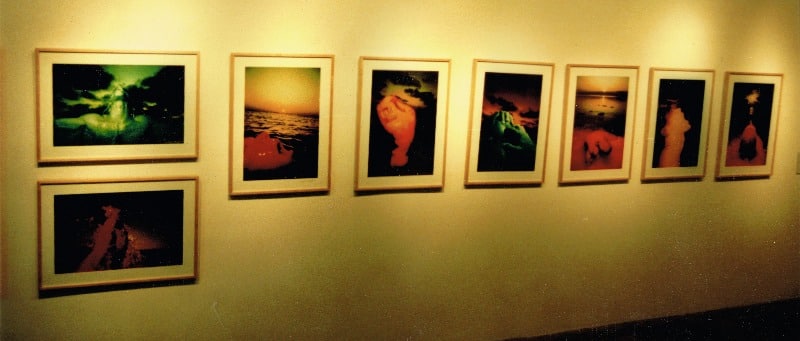
FB
I wanted the first one. Remember we framed it and you didn't sign it? That was so stupid. I should’ve had you sign it first.
EE
We're so dumb. But anyway, I said, “That's my friend's photo. It doesn't matter how much you pay.” He said, “I need one.” I responded, “Well, I'm not making another one.” So Tony said, “I need to talk to Frank. I want to buy it for Anthony Quinn’s 75th birthday.” He had just finished shooting the movie Revenge with Quinn and Kevin Costner and Tony wanted this photo for Quinn’s 75th birthday. So he flew me to New York and I printed another photo at a different lab. I killed them because they were not used to the size and the preciseness of the colors and the grain and all those things. But we printed it, framed it, and I personally delivered it to Anthony Quinn’s penthouse in New York. The son opened the door and we delivered it as a present from Tony Scott and I left and that's it. And it remained a great story.
FB
I was also just reminded of the crazy story of when the two of us went to a party and we had just seen Dead Calm, which we were always talking about. “That movie is amazing! The girl is stunning!”
EE
And she walks in with a girlfriend. Nicole Kidman. Our jaws just dropped.
FB
Well, I had to go talk to her. I was so nervous and I started screwing that up. Luckily you were there. You were calm like, “Yeah, we saw the movie.”
EE
She was so impressed that we loved the movie.
FB
She was so into it because it was her first trip to America. She was stunning. She was engaging. Sweet. Somehow, I got her phone number. I said, “We should go get coffee.” She goes, “Yeah, sure. I would like to.” I’m like, “You would?!”
EE
For us, she was the star of Dead Calm. For her, we were the Hollywood people and she had no clue how to get around in Hollywood.
I met her again maybe a year later. I shot this little commercial in Miami and then we drove up the coast to Daytona where Tony Scott was shooting Days of Thunder. It was the weekend they did the Daytona 500 scene. Nicole and I had lunch together on the set and Tom Cruise was there.

FB
I talked to her two or three times trying to set up when we could get together because she had a hard out. She was leaving on a Friday and I'm like, “Okay, let's try and figure out when we can get together.” She goes, “Oh, I'm sorry. I'm not gonna be able to get together with you. I'm doing this movie Days of Thunder and I'm flying down Florida and Tom Cruise is in it.” As soon as she said Tom Cruise, I thought, “That's it. Tom Cruise is going to fall in love with her.” Easiest prediction I've ever made.
EE
On the set, Tom had a flu or something and then a few days later Nicole had the flu and everybody knew that they were dating.
FB
That's funny.
EE
Insights from Tony Scott and his second assistant director, Scott Metcalfe.
FB
You also do really beautiful black and white photographs. You were kind enough to come to Minnesota and shoot black-and-white photos of me and Sandra prepping before we got married. Then you took a bunch of photos at the wedding.
EE
I used a red filter to get the clouds to pop like crazy. It makes the blue skies extremely dark and the contrast with the white clouds is just unbelievable. It enhances the contrast on the skin. You look amazing, bro.

FB
That’s what 20-year-old skin looks like.
You also did a photograph in Minneapolis with my two brothers, Steven and David, and my sister Michelle. We wanted to have a photo as a gift for my parents for their 50th anniversary.
EE
We flew together to Minnesota to shoot it and I had to dig through your siblings for their characters. Who is what? Where is the complexity? Of the four siblings, there is a reason why each one of you is doing what you're doing. There is a reason why she's on the sofa like a princess in the front. We worked and we used this technique again so her skin has the same tone as Julia in the Wicked photos.
FB
Completely different from what you did with There's Something About Mary but it's a style and a technique that you have used throughout your career.
EE
It was important to bring out the personality. I remember the conversations with each one of you. You look like a Hollywood producer.
FB
I still have that jacket. I wore it two days ago.
EE
That’s crazy. It looks good. There is a reason why he's jumping in the air. The one you blew up was the one where his legs are spread out and he looks like an X-Wing. The skies are brighter and you can see the branches. With this brother, we did some with the helmet on.
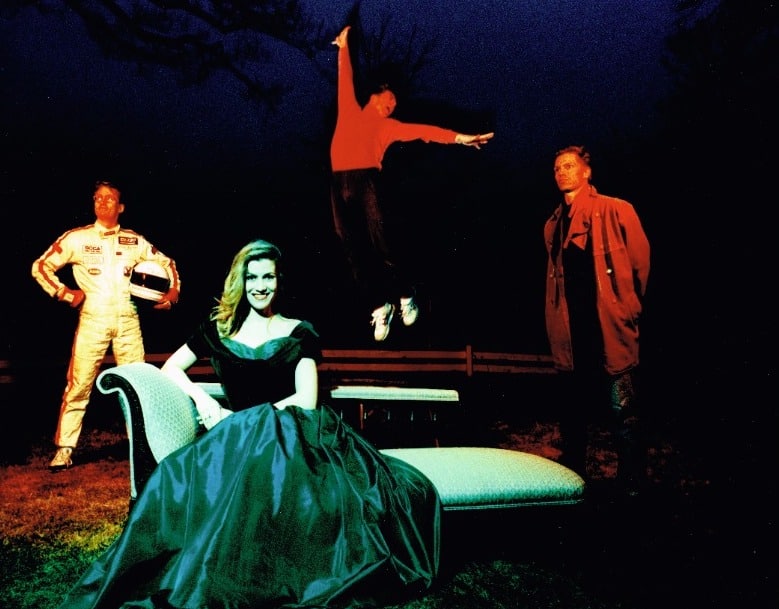
FB
Yes, but my mother would have lost it. She could barely accept that three of us were not smiling, at least Michelle was smiling. My mom hated photographs where the kids weren't smiling but to your point, it does capture an essence.
EE
It was a very, very unique, exhausting job to understand the characters.
FB
You have to deal with somebody else's family. Can you imagine?
EE
It was a great experience. Everything we did was with a lot of fun and joy.
FB
Then remember you came up for the Seattle Film Festival and shot PR for Wicked.
EE
There are shots of Julia lying on the carpet, right? We had to show her and Patrick from above. They can be in any magazine.
FB
Do you miss it? You're no longer shooting photographs but I'm really struck by the level of professionalism, passion, and artistry, as if we just did this two weeks ago.
EE
It was a major part of my life for 25 years. But the fact it has been doesn't mean the stimulation is not sustained. It didn't fade. It faded as a profession because I didn't want to do it anymore. I got tired of doing it and, at some point, I didn't see the purpose anymore.
FB
Also a big physical toll on you.
EE
Crazy physical toll. Big toll on the family. It got to me that I would have to take pictures for the rest of my life if I was gonna make a living. I felt enough was enough. I was in the studio shooting cosmetic catalogs or swimwear catalogs and most of them were always artistic. There was a photo I took in Africa with an American model in a bathing suit holding a cheetah out in the wild. It looks like theater and it’s beautiful. But I started asking myself, “What is it for? What's the purpose?” It's a catalog and a catalog is for people to buy. So it's not really the art of generating something for others.
FB
We all transition. We all have to evolve.

EE
I even felt that at some point, most women around the world are not models. When I take pictures that extreme, “Does it do good to women or bad?” I got to a point where I felt it was bad.
FB
People are not that perfect.
EE
Nobody's that perfect and nobody can be reached or touched like this. It was also the feeling of, when I'm on the set, I know what I want to get and I can get it. Because technically I know what I'm doing. But also emotionally, I know what I'm doing. I know how to talk to the models to get the sensuality or the feelings and emotions I want to get. But when the job is over, I'm done. I walk away. It left emptiness and I needed to move on and do other things.
To be able to build two good careers is not easy. It’s hard to do one over a lifetime but it's not over yet. So who knows where we are going? I'm in the middle of a very exciting career that I have become very good at and it's great to have these different colors inside as a person.
FB
We're really taking a step back to a period of time that was really creative for me. I produced two movies back to back. A lot of other opportunities came along through producing those movies and you were right there and I was listening to you and your aspirations. Then I transitioned into writing The Looking Glass Wars series and all the art that came with that. Hopefully, the artistry continues even if the medium changes.
EE
We’re such good friends and we've been friends for decades and it's crazy. No matter how many years go by, we stay so close. But it has always been your level of understanding the business, but also having the creative eye, and the sensitivity to judge and know what's good, what's not good, what you're looking for. So seeing your artistic side inside your creative way, also as a businessman, I think made it very nice for us and easy for us to connect, because we could speak about things.

FB
It’s about choices. When you're making creative choices, some are elevated, you hope they're elevated, but you're still making a choice. So when you point to this one photo, where I put a dot and you put an “X” was because we both went, “Yeah, that is a choice.” We want to use those choices. We've had a lot of creative choices. Whether it was There’s Something About Mary, working with Julia for Wicked, doing Birdbath together, or something very personal like my first wedding.
EE
It's funny, my oldest son is sitting next to us and hearing stories that he has never heard before. I have to tell you we always had crazy laughs and hit it off together on a crazy level with where we could go as friends.
FB
You were my first male friend, my first guy friend, that I felt was an intimate relationship in the sense of, I'm letting my guard down. That is where the artistry comes from, the vulnerability. We're making choices, some good, some bad, and we did that for very many years. To your point, coming back here and having this conversation is crazy. So thank you for spending some time with us and sharing your stories and creativity.
EE
What a great idea. It was fun being here. Thank you.
For the latest updates & news about All Things Alice, please read our blog and subscribe to our podcast! If you’d like to hear Gerard’s excellent narration of The Looking Glass Wars, click here!